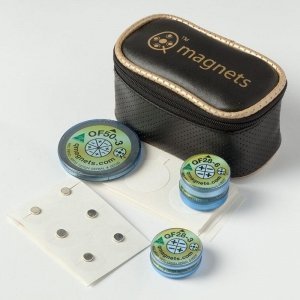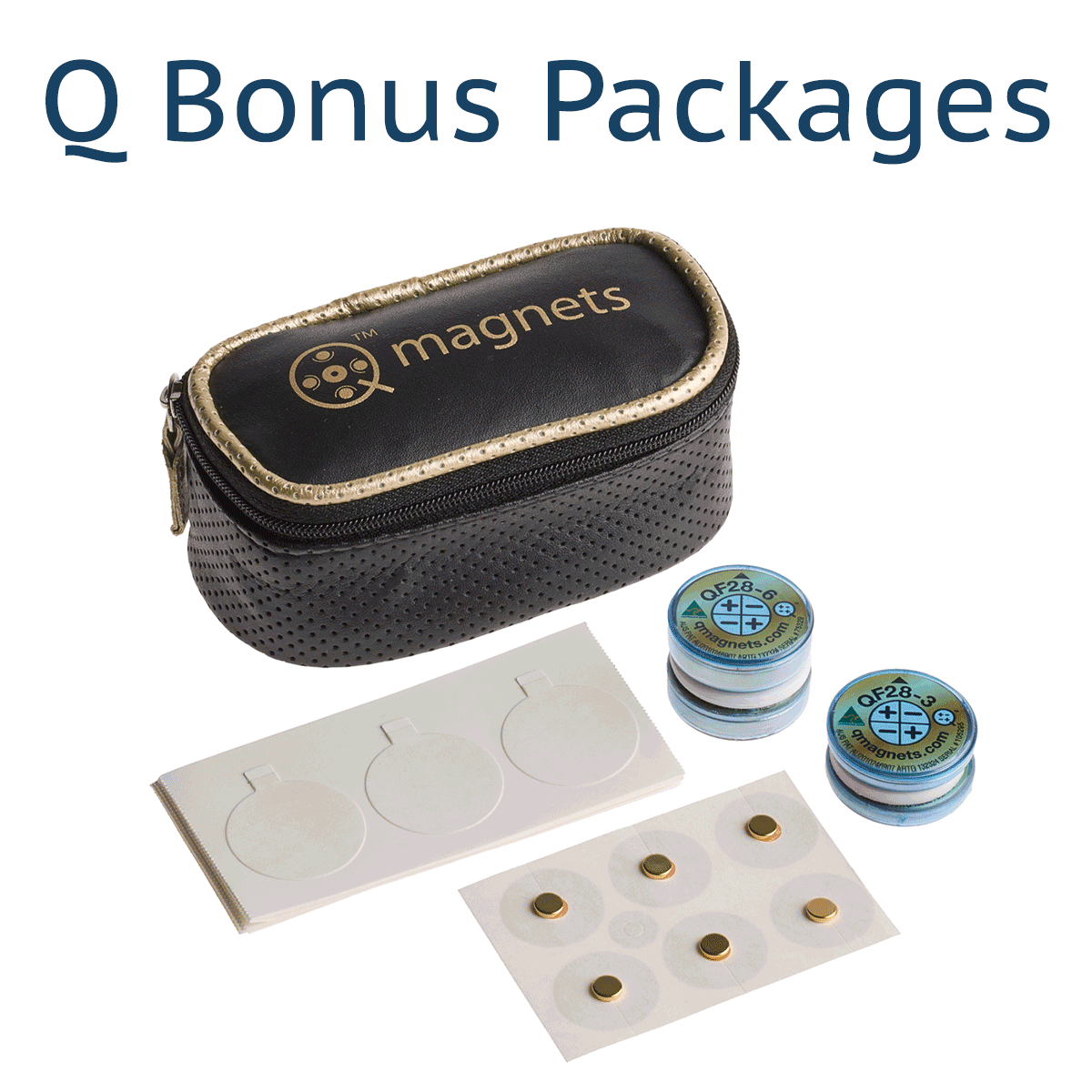DISCLAIMER:
The type of magnet used is this study is not a Q Magnet.
An Italian study using neodymium magnets sewn into textile supports worn 2-8 hours/day for 4 months has shown significant benefits over and above placebo. The 48 subjects enrolled in the study suffered from osteoarthritis or osteoporosis and were assessed for pain perception at 2 and 4 months after commencing the trial.
The perception of pain was significantly reduced in the active group (36% reduction) and increased in the placebo group (3.4% increase) (p<0.001). In addition, there was an improvement in the quality of sleep in patients with osteoarticular pain.
The authors postulated that the pain relief might be explained by the anti-inflammatory action of magnets and/or an effect on C-fibre nerves, responsible for the transmission of pain.
While all of the references from the paper refer to multipolar magnets and magnetic field gradients, it’s not possible to determine from the description the characteristics of the magnetic field entering the body or any specific joint such as the knee or lower back.
A paper by Colbert (2009) conducted a critical review of treatment parameters of static magnetic field therapy. Fifty-six articles were reviewed and ten essential static magnetic field (SMF) dosing parameters were suggested as requiring description when conducting clinical trials.
Ten essential dosing parameters, as suggested by Colbert.
| Dosing parameter |
| 1. Target tissue |
| 2. Site of magnet application |
| 3. Distance of magnet surface from target tissue |
| 4. Magnet surface field strength |
| 5. Material composition of permanent magnet |
| 6. Magnet dimension |
| 7. Magnet polarity |
| 8. Magnet support device |
| 9. Frequency of magnet application |
| 10. Duration of magnet application |
The published clinical trials using static magnetic fields would be much more useful if researchers documented Colbert’s dosing parameters.
While this paper provides a very favourable study for static magnetic field therapy, given that it does not provide a description for the type of magnetic field or the method by which they protected the blinding of the magnets, it cannot be given too much weight.
REFERENCES:
Topa G, Ventra M, Dato G, Matonti C (2015) Analgesic Effect of Textile Supports with Static Field Magnets in Patients with Osteoarticular Pain Syndrome: Results of a Randomized, Placebo Controlled, Double Blind Clinical Trial. Orthop Muscul Syst 4: 183. PDF
Colbert, A. P., H. Wahbeh, et al. (2009). “Static magnetic field therapy: a critical review of treatment parameters.” Evid Based Complement Alternat Med 6(2): 133-139. PMID 18955243; doi:10.1093/ecam/nem131
Neuromagnetics is such an exciting field to be part of and Q Magnets are a therapy that is…
- Simple
- Drug free
- Non-addictive
- Non-invasive
- Painless
- Safe
- An immediate and local impact
- Performed at home
- Paid for by the individual and
- Based on scientific evidence
And by a listed medical device that …
- Does not require any care or maintenance
- Lasts almost a lifetime
- Has no moving parts
- Is relatively inexpensive
- Consumes almost no energy
- Is a treatment which requires little expertise, and
- While not is use can be used to keep notices stuck to the fridge
Why would anyone not seek to support such a therapy?
Warnings:
- Do not wear Q Magnets near sensitive medical equipment or implants such as pacemakers, dorsal column stimulators, infusion pumps, or any other magnetically programmable medical devices.
- Always read the Information & Instructions sheet that comes with the product.
- This product is not a replacement for professional medical treatment.
- If you are uncertain if these contraindications apply to you, consult your health care professional prior to use.
- Use only as directed, if symptoms persist, see your health care professional.
- Do not use during pregnancy as there has not been adequate testing.







